There is much on all our minds as we prepare for Christmas this year that is not pleasant. The mass murders this last week in Paris, Beirut and Bagdad, the tragic plight of millions of refugees around the world, and our own personal tragedies of lost loved ones, friends or relatives with terminal illnesses, and other losses mean that our hearts are grieving.
Acknowledging our pain through song, ritual and liturgy can be a helpful way to deal with loss and pain during the Christmas season. Increasingly churches are recognizing this and facilitating grieving through Blue Christmas services.
Last year I posted this resource list for those that are looking for appropriate songs, and liturgies. Katie Kennington Steer later wrote this beautiful poem/post as part of her personal grieving. This year I thought I would focus on creative activities that might enhance the experience and enable you and your congregation to process their own grief. They could be used to create prayer stations for the service or alone as a single focus.
The Empty Chair
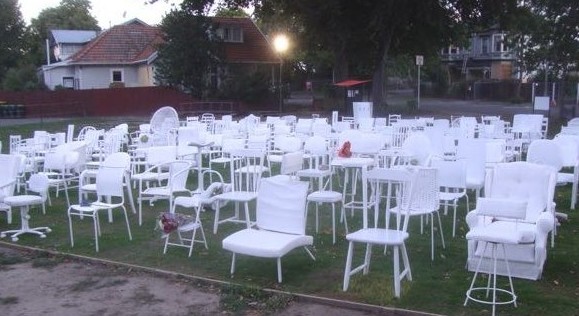 An empty chair is a powerful symbol of loss and can really facilitate our grieving. Creating a prayer station composed only of empty chairs or having empty chairs at the front of the sanctuary are both simple but powerful worship tools. If you have a small group of participants you might like to suggest each person grabs one of the empty chairs and sits it next to them at one point in the service. The image above is from a memorial service Peter Majendie constructed following the Christchurch earthquake of 2011 – heart rending and effective.
An empty chair is a powerful symbol of loss and can really facilitate our grieving. Creating a prayer station composed only of empty chairs or having empty chairs at the front of the sanctuary are both simple but powerful worship tools. If you have a small group of participants you might like to suggest each person grabs one of the empty chairs and sits it next to them at one point in the service. The image above is from a memorial service Peter Majendie constructed following the Christchurch earthquake of 2011 – heart rending and effective.
Use Lots of Candles
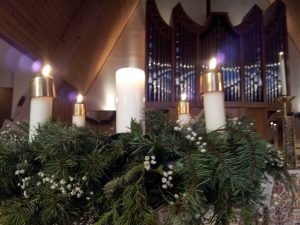
Four candles are often lit in Blue Christmas ceremonies: 1) One candle is lit for those who have passed, giving thanks to the memory that connects them to us this season; 2) One candle is lit to redeem the pain of the loss; 3) One candle is lit to honor ourselves; and, 4) One candle is lit for the gift of faith and hope symbolized in the Christmas story. However the lighting of candles by each of the congregation and the creating of a prayer table for all those we have lost can provide an even more compelling statement.
Create a Collage
Ask people attending the service to bring photos of those people or situations for which they are grieving. At one of the tables have a large sheet of cardboard on which people can paste their photos to create a collage.
Remember
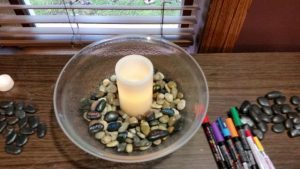
Provide ribbon or paper for people to write names or prayers on. Our church does this for All Saints Day and the ribbon then hangs in the sanctuary until Advent begins. If you have an artist in your congregation who can create a collage from these ribbons and prayers. In the photo above we used small rocks instead, writing peoples’ names on them and then putting them in the bowl around the candle. At the end of the service people took out their stones to take home.
Symbols of Pain and Suffering
 Our good friend, Mark Pierson, is one of the most creative worship curators I know. I still remember him using zip ties and barbed wire crosses in a worship service that had all of us grieving for the abandoned and despised in our world.
Our good friend, Mark Pierson, is one of the most creative worship curators I know. I still remember him using zip ties and barbed wire crosses in a worship service that had all of us grieving for the abandoned and despised in our world.
Zip or cable ties, are used as handcuffs in many parts of the world and can effectively be used as symbols of bondage either in our own lives or in the lives of the suffering people around the world that we identify with.
One possibility is to give each person a zip tie at the beginning of the service. After a period of quiet prayer and reflection encourage them to come to the front where a chain link fence or screen has been set up. Participants attach their cable tie to the fence as a symbol of identification of the suffering of people unjustly treated, or senselessly killed around the world. They then pick up a barbed wire cut off cross to take back to their seat as a reminder that Jesus accepted us and came to earth to relieve our suffering and pain. The barbed wire is also a symbol of our willingness to accept responsibility of the suffering of others and to do what we can to alleviate it.
Symbols of Hope

Most people do not want to leave a service with a feeling of despair or hopelessness. Providing a table at which they can create a memorial for the season that gives them hope is one way to turn hopelessness into hope. You might like to provide paper and pencils for people to draw or doodle with, rocks for them to paint or plants to create gardens. Alternatively ask them to bring journals and photos to the event. Provide a table at which they can create artistic images of their loved ones or of the situations they are grieving.
Art journalling like this is becoming more and more popular. Creating pages with the images of those we love who have passed away, decorating them and using them as a focus for prayer during the season can be very healing. Personally, I am discovering more each year how healing a memorial garden or stone can be too and offering this creative exercise to others is something that I increasingly do at retreats and other events.
————-
Resources from Godspace for Advent and Christmas
Godspace has a variety of resources available for celebrating this season.
Lean Towards the Light this Advent & Christmas + Advent Cards Bundle compiled by Christine Sine and Lisa DeRosa
A Journey Toward Home: Soul Travel For Advent to Lent compiled by Kristin Carroccino and Christine Sine
Waiting for the Light: An Advent Devotional compiled by Ricci Kilmer, Susan Wade and Christine Sine
Prayer Cards – more than Christmas gifts. These have been used for daily devotions, grief counselling, small groups and congregational prayers.
Check out the entire resource list here for more ideas for Advent and Christmas.
Godspace has a number of Advent resources available for both free download and purchase. Visit our store.

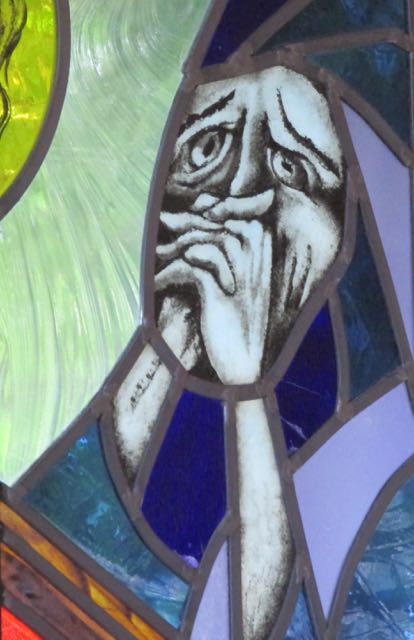
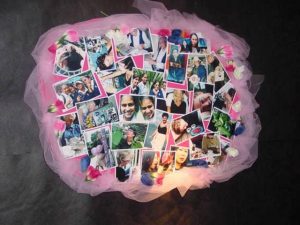
2 comments
[…] Preparing for a Blue Christmas – New Ideas for 2015 (11/16) […]
[…] Preparing for a Blue Christmas – New Ideas for 2015 […]